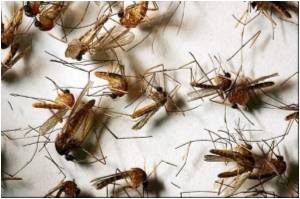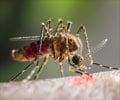West Nile virus is more prevalent among mosquitoes in orchards and vineyards from where it spreads to birds, horses and people, finds a research.

Since it was first seen in New York in 1999, West Nile virus has reached across the country and shown few signs of abating. Last year, the Centers for Disease Control had the highest number of reported cases—5,387, including 243 deaths—since 2003.
Roughly one in five infected people experience a fever, headache, body aches and, in some cases, a skin rash and swollen lymph glands. One in 150 people can get a high fever, headache, neck stiffness, disorientation and neurological problems.
Most efforts to suss out the ecological workings of the virus have focused on reports of infected people, "a crude indicator at best," says Crowder. Almost all victims have no symptoms or are misdiagnosed, while others can be infected far from where they file a report, he says.
Agricultural areas have also seen higher percentages of infected people, but that still does not get at the underlying mechanism. "Is that because there are more birds there?" says Crowder.
"Is that because there are more mosquitoes there? That hasn't really been linked together." Crowder, working with fellow entomologist Jeb Owen, other WSU colleagues and the state Department of Health, merged data from a variety of sources, including West Nile infections in humans, horses and birds, surveys of virus-bearing mosquitoes, breeding bird surveys, and detailed land use maps and climate data from around the Northwest.
Advertisement
"These same habitats are also resulting in much higher rates of infection within mosquitoes themselves," said Crowder.
Advertisement
It's still unclear why the habitats would create such a perfect storm for the virus. The researchers speculate that mosquitoes are drawn to orchards for plant nectar during flowering, while robins and house sparrows use them for nesting and feeding. Together, the insects and birds become focal points for the disease.
Source-Eurekalert













